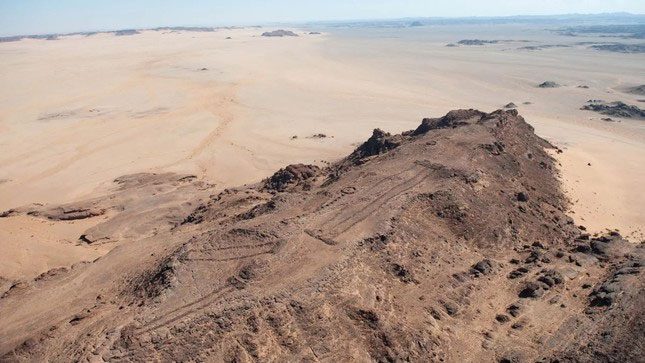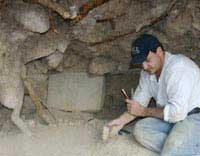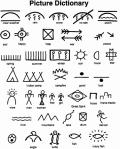Archaeologists in Saudi Arabia have discovered ancient human remains buried alongside hundreds of animal bones scattered within a 7,000-year-old desert monument, a ritual site used by a prehistoric cult.
The remains of an adult male, approximately 30 years old, were found inside a mustatil, an Arabic term meaning rectangular. This is one of over 1,600 structures identified in Saudi Arabia since the 1970s. Largely buried under sand, these structures were built when the Arabian Desert was a lush grassland where elephants roamed and hippos bathed in lakes.
A recent excavation, detailed in a study published on March 15 in the journal PLOS One, has revealed more insights about these mysterious structures and the worshippers who have been lost to time.

Animal and human remains excavated from an ancient desert monument believed to have been used for rituals in Saudi Arabia.
The builders were members of an unnamed cult. Researchers suggest that as climate change gradually turned the land into desert, cult members may have gathered to protect it by sacrificing their livestock to unnamed deities.
The lead author of the study, Melissa Kennedy, an archaeologist at the University of Western Australia, stated: “Very little has been documented about this. Only 10 mustatil have been excavated, and this study is one of the first published. Therefore, we still do not know much about this tradition.”
Ancient Sacrificial Rituals
Mustatil come in various shapes, but they are typically rectangular formations made from low stone walls about 1.2 meters high. Kennedy noted that excavations revealed complex structures inside, including walls and columns leading to central rooms that may have been used for feasting and sacrificial rituals.
Worshippers would enter from one end and walk 20-600 meters to reach the other end, arriving at a ruined platform referred to as the head. An interior room within the head contained a beytl – a sacred stone, sometimes originating from a meteorite – with which cult members would often communicate with their gods.
The mustatil excavated, located 55 km east of the ancient city of AlUla, measures 140 meters long and is constructed from local sandstone. Its beylt is a large upright stone, around which researchers found 260 pieces of skull and animal horns. The bone fragments are primarily from domesticated livestock, with some fragments belonging to goats, gazelles, and small ruminants that were also domesticated.
Kennedy remarked: “It is likely they brought animals, possibly slaughtering them on-site, offering horns and heads to a deity while consuming the meat. We cannot be certain if the slaughter occurred on-site or elsewhere, as the remains of the animal were not found. However, we think it may have occurred on-site, as the horns, especially the keratin – which degrades very quickly – were in such good condition. This suggests that perhaps there was only a very short time before people removed the horns and presented them to the divine.”
Researchers discovered a cist – a type of burial chamber built during the Neolithic and Bronze Ages throughout Europe and the Middle East. Analysis of the man’s bones indicates he died in his 30s to 40s and likely suffered from osteoarthritis, the most common form of arthritis.
Radiocarbon dating of the human and animal bones shows that this man was buried 400 years after the animals were slaughtered – a sign that this was a repeatedly visited pilgrimage site.
Kennedy stated: “We hypothesize that mustatil sites retained their significance even after they were no longer in use, and later generations continued to bury their dead at these places as a way to assert ownership and affirm their connection to the past.”
The purpose of these rituals remains a mystery. Researchers speculate that there may be some connection between the rituals practiced inside and the desire to bless the arid land with rain.
The ongoing investigation may reveal links between ancient religious practices and the region’s primordial climate crisis.





















































